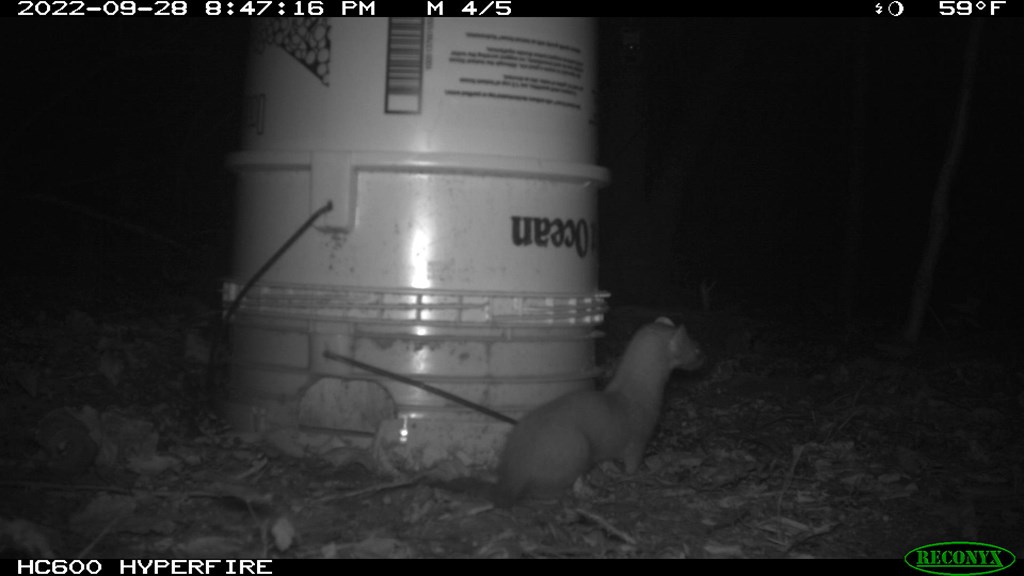Mammal Monitoring on the Mountain: Weasel Research Update
Posted on in On the Mountain by Laura Berry

Hawk Mountain Sanctuary is world renowned for research, conservation efforts, and education programs that shape the next generation of raptor conservationists. Among the ongoing efforts to protect birds of prey, Hawk Mountain also hosts a plethora of other research. Forest ecology, songbird, and mammalian-focused projects are also being conducted on Sanctuary grounds, framing the importance of Hawk Mountain not exclusively to raptor conservation, but to conservation efforts in general. One of the studies currently being conducted at Hawk Mountain Sanctuary focuses on developing better methods of monitoring weasel species in Pennsylvania.
But first, a little background—there are three existent species in Pennsylvania: long-tailed weasel (Neogale frenata), short-tailed weasel or ermine (Mustela richardsonii), and least weasel (Mustela nivalis). The status of weasel species in Pennsylvania is currently unknown, especially that of the least weasel. The disappearance of this tiny carnivore could indicate a population decline, but because there have been so few reported sightings in the past twenty years, there is not enough data to make an informed decision about conservation efforts. To get a better idea of the current population trends of these mysterious mustelids, the Pennsylvania Game Commission, along with the Western Pennsylvania Conservancy, Pennsylvania Natural Heritage Program, and Millersville University, have begun a state-wide pilot study to test survey techniques.
One such study is currently being conducted at Hawk Mountain Sanctuary, led by Dr. Aaron Haines, certified wildlife biologist and professor at Millersville University. Haines, along with students, has been deploying three different trail camera set-ups around Sanctuary grounds. Scent-lures attract the weasels, and the motion-detecting cameras capture footage as they enter the study site to investigate. The resulting photographs are very amusingly bigfoot-esque, of which evoke enthusiastic reactions from researchers. So far there have only been a handful of weasel photographs captured, but none of the target species. To determine the effectiveness of scent-lure as an attractant, researchers have also begun to rotate different attractants among the three camera-trap set-ups. More details to come as this exciting study progresses.